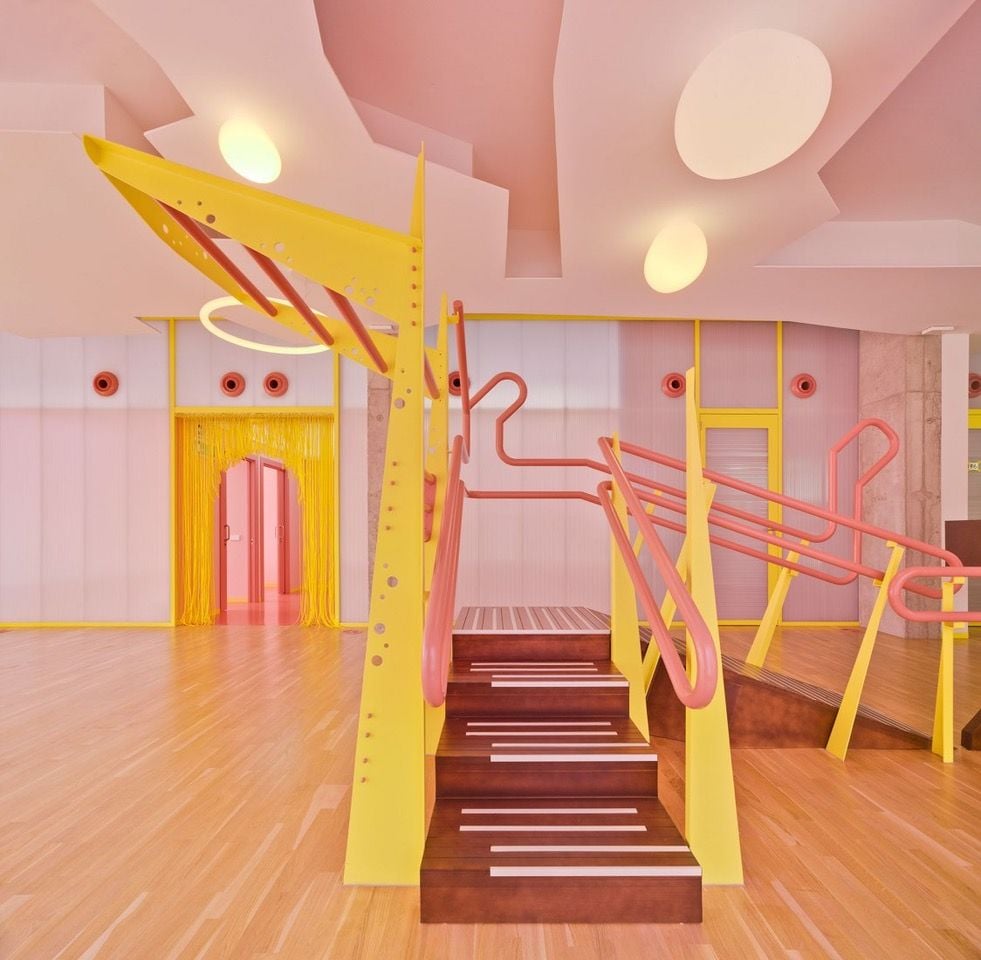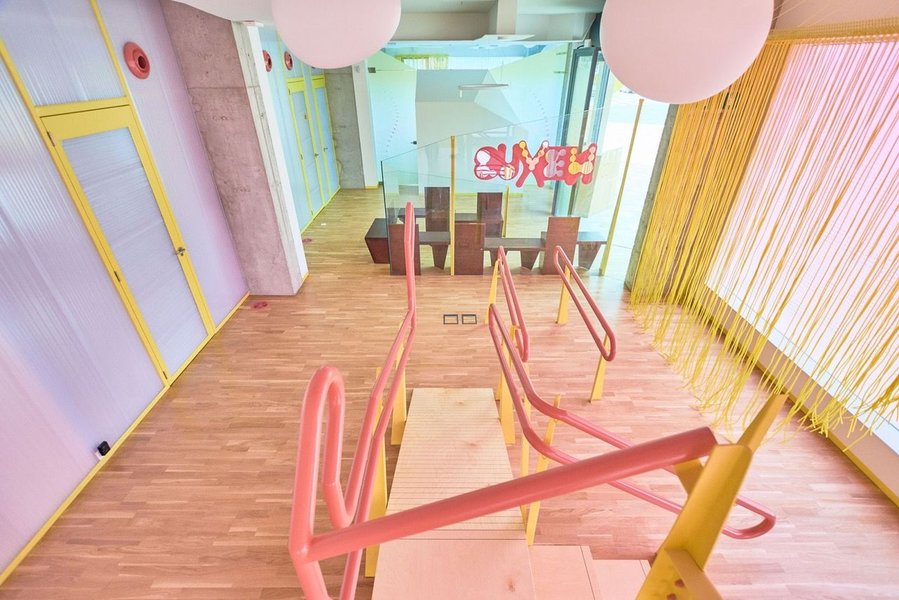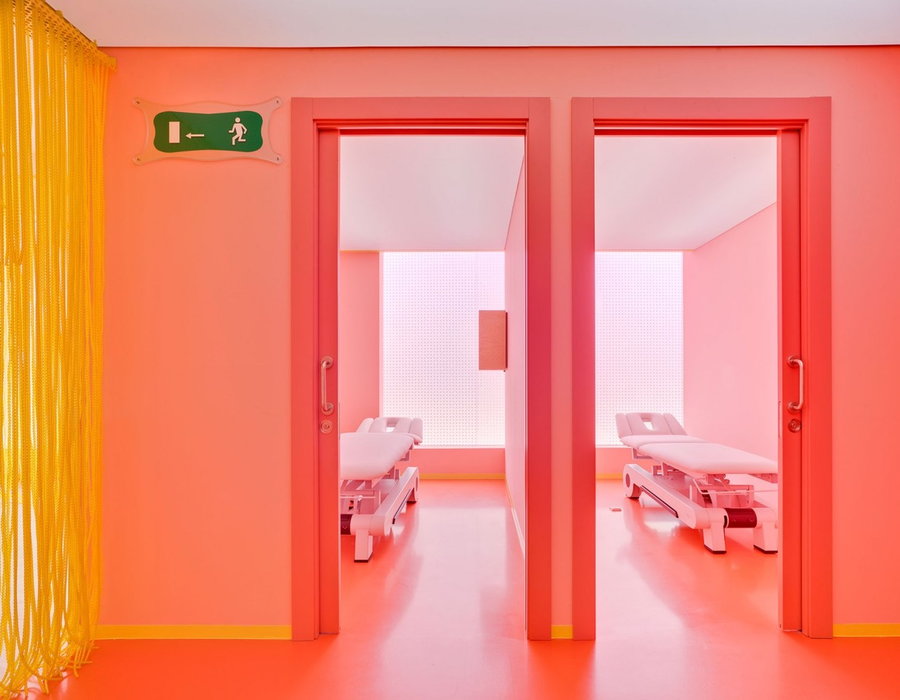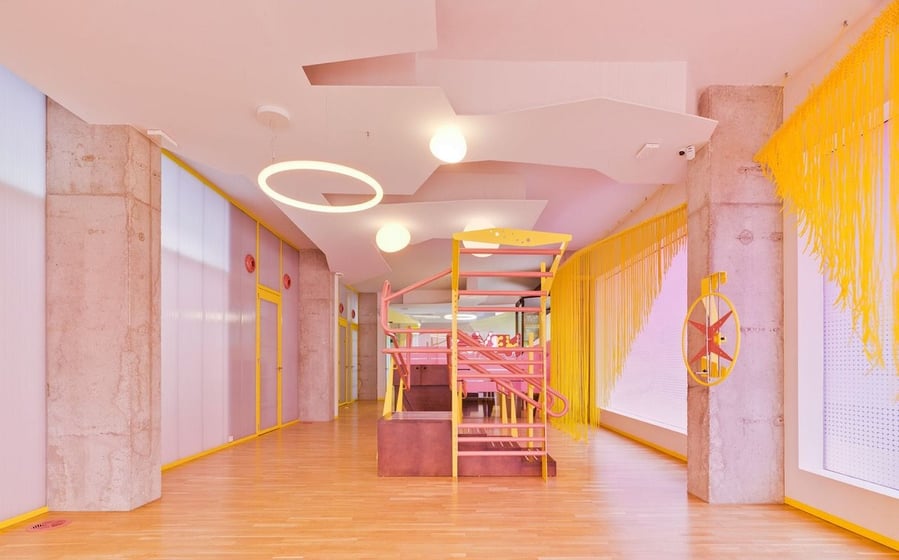The Form of Care: Soothing Colors Enhance a Traumatology Clinic in Spain
For decades, medical and psychiatric facilities have used an overabundance of white and metallic surfaces to create an atmosphere of cleanliness and professionalism. But to some people, this kind of monochromatic color scheme can also feel overly sterile, institutional, and anxiety-inducing. Could a more intentional use of color transform the way we feel in clinical spaces?

Architecture and design studio MAGICARCH thinks so. Led by María José Marcos and based in Spain, the firm has created paradigm-shifting interiors for traumatology and physiotherapy clinic Nexus8 in Murcia, southeast of the Iberian Peninsula. It’s safe to say you’ve never seen a doctor’s office that looks quite like this.
Images of the 2,551-square-foot space call to mind theater sets, sci-fi films, and children’s playgrounds much more than they do rehab clinics. Each room features unexpected geometries and a combination of bright and pastel mood-shifting colors designed to soothe or stimulate. The designers wanted to break the stereotypes associated with conventional clinics, focusing instead on the notion of “care” and all it can look like.



It may sound like pseudoscience, but colors and emotions actually are closely linked. Though our individual perceptions of color aren’t universal, and can vary depending on our cultural backgrounds and personal experiences, studies have shown that certain colors can be linked to specific physiological reactions. Red can raise the heart rate, blue can promote relaxation, and as a combination of the two, purple can provide a balance that encourages creativity.
MAGICARCH used pink and yellow tones in the rehabilitation gym spaces on the east side of the Nexus8 clinic to evoke the colors of a sunset, which can boost the production of relaxation-inducing melatonin in the brain. The west side, where the medical consultation rooms are, was mostly painted blue in an effort to help both doctors and patients focus during medical treatment and surgery.


The designers call the resulting aesthetics “Kubrick-ish,” and if you’re familiar with director Stanley Kubrick’s work, it’s easy to see why. Futuristic elements like circular hanging lamps, bright but diffused backlighting, and dynamic interior planes are interesting to look at, but they also add functionality and encourage air convection to make the building more comfortable and sustainable. The gym features softly fringed doorways and rehab equipment that actually looks fun to use, and the examination rooms are refreshingly devoid of intimidation.


According to the firm, the design “generates the therapeutic with thermodynamic strategy, creating different atmospheres for the climatic comfort. Nexus8’s design enables metabolic architectures that rely on rehabilitation techniques based on the hormonal response of the human being. Rooms are characterized by the intensity, direction, and saturation of the light that users perceive depending on the space they are located in. This is an essential part of the chromatic design process.”
“Therefore, the clinical space is designed from a CHROMATIC AND LIGHT METABOLISM perspective, spaces are articulated through EQUIPPED DEVICES that finish completing uses and energies, and the DESIGN OF THE INVISIBLE thinks about the atmosphere, the acoustic, the thermal…as construction materials.”

Ultimately, the feel of the space is just as important as its form. Walking in feels like getting an enormous, comforting hug, translating the word “care” into a physical sensation.




